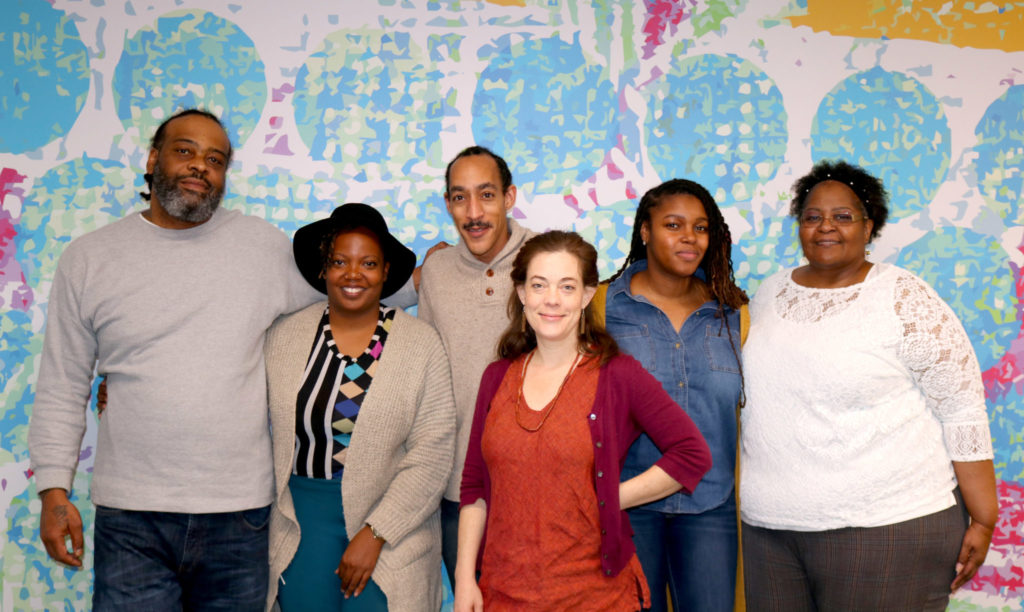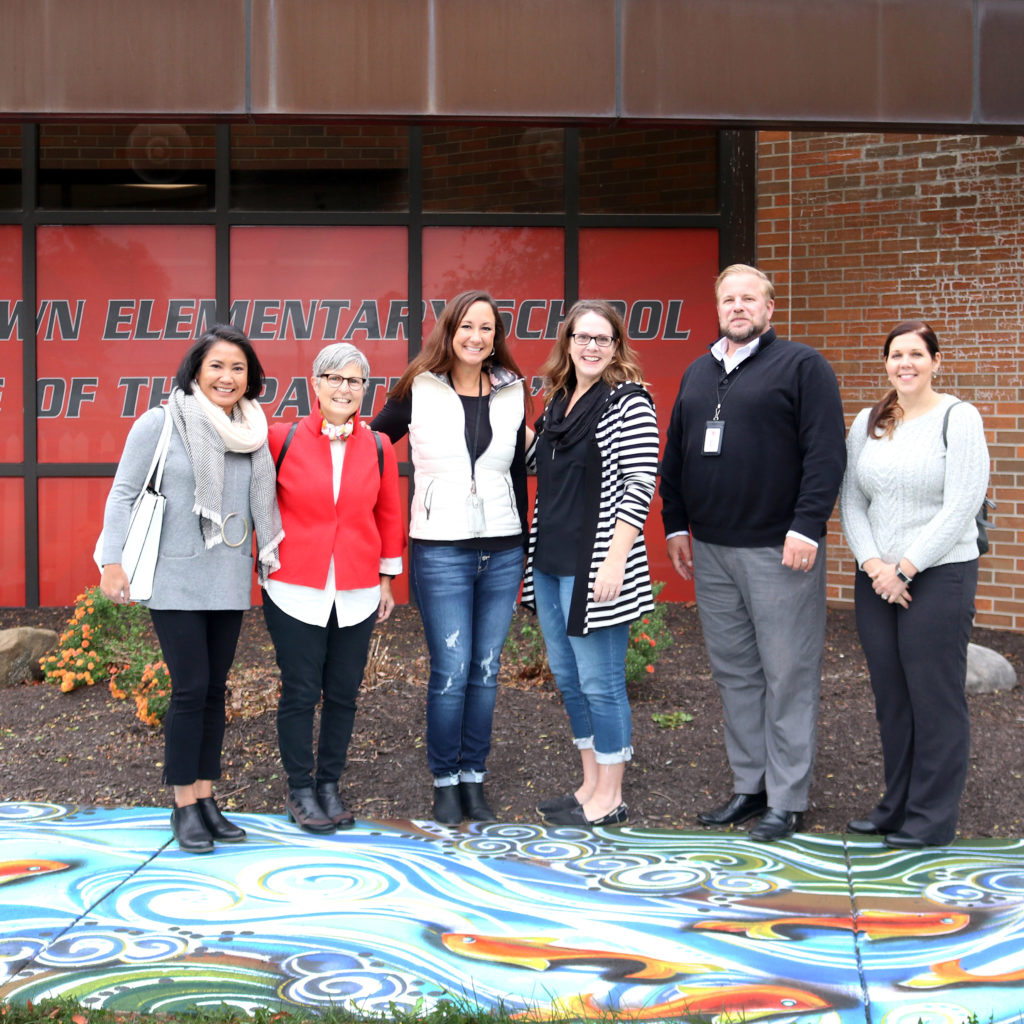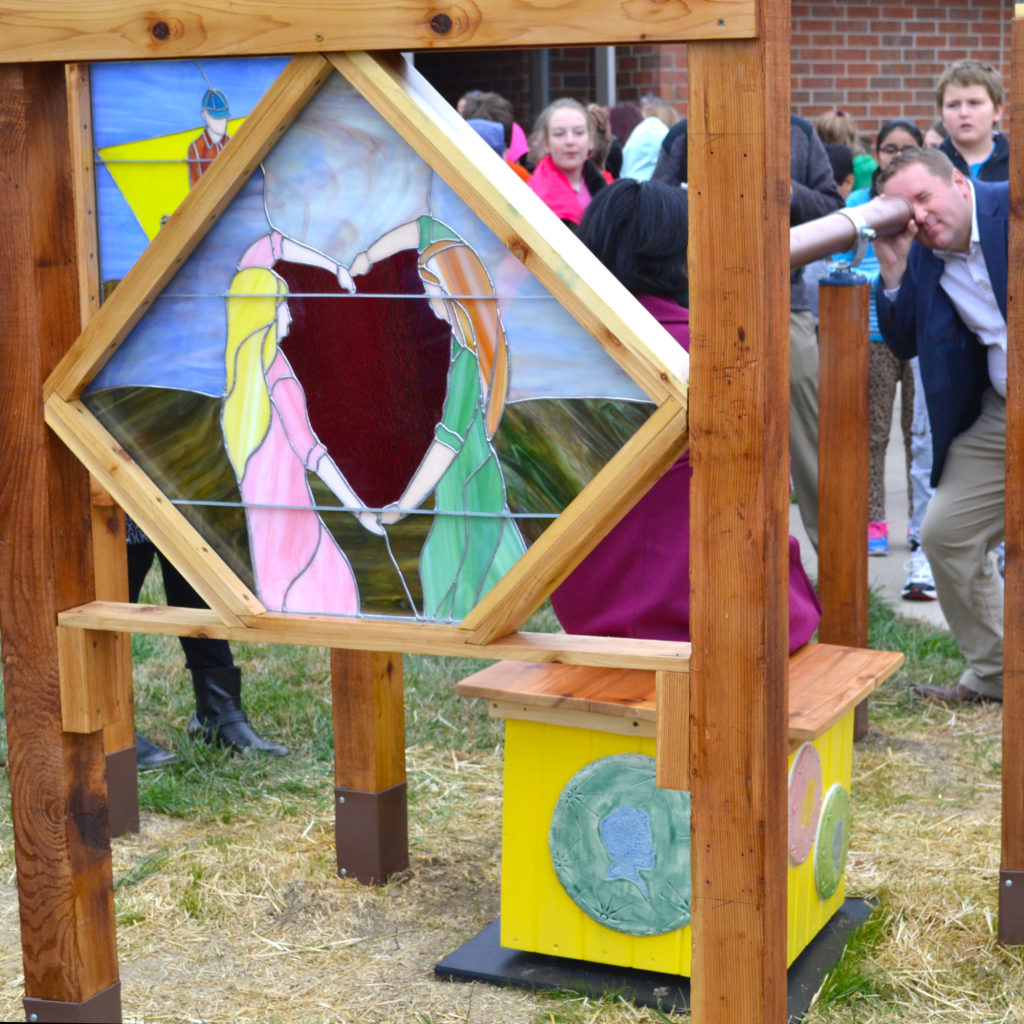About the Program
The “third space” project enhances the school environment and elevates the learning experience by showcasing large-scale art installation from a professional local artist. Art is integrated into the curriculum and the physical space of a school.
About the School
IPS Frederick Douglass School 19 is a K-8 community where students are challenged to learn both inside and outside of the classroom. Students are provided with a positive and caring environment where they have a voice.
About the Artist
Dawn Holder uses ceramics, sculpture, and installation to investigate the myriad human forces that shape our shared landscape. Using porcelain as a primary medium, her work combines diverse influences, such as Minimalism, Eco-Feminism, and the Necropastoral, to explore topics such as the American lawn, the history of monuments, and ecological imbalance.
About the Program
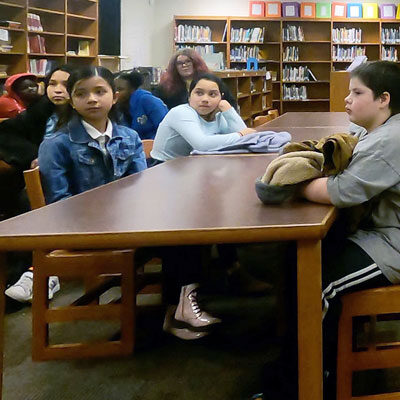
See. Think. Wonder.
The “third space” project enhances the school environment and elevates the learning experience by showcasing an art installation from a professional local artist. Art is integrated into the curriculum and the physical space of a school.
Lasting for an entire semester, the project incorporates an approach to teaching that helps to improve learning and develop a student’s thinking skills. Based on Harvard’s Project Zero, students and viewers are encouraged to reimagine school environments as dynamic learning spaces and the role of the arts within them – to see, to think, and to wonder.
Students engage in collaborative sessions so that each work of art emerges as a combination of both a student’s thoughts, experiences, and ideas and the artist’s fine art practice.
This particular project combined elements of Arts for Learning’s Fresh StART program. One primary objective of Fresh StART is to strengthen a community’s sense of pride by stabilizing and improving an underused area, within or around the school, through the installation of a permanent, public work of art inspired by ideas generated by students.
This project is made possible by Indianapolis Public Schools (IPS) through the Elementary and Secondary School Emergency Relief (ESSER) Fund.


Educational Basis for third space
In a third space program, students experience their school, as education philosopher Maxine Greene explains, “as if things could be otherwise.” View a 1998 presentation about the importance of imagination by Maxine Greene on YouTube.
Greene advocates for positioning students as explorers who use their imaginations to envision new ideas and patterns emerging from the world around them (Releasing the Imagination: Essays on Education, Art, and Social Change (1995)). They gradually align their natural curiosity with their interests.
According to her research and that of numerous other scholars, such as Christopher Garrett and Alice Pennisi, students not only thrive in environments that promote student-centered inquiry and expression through the arts, they also retain more information and are more motivated to continue learning.
The project also uses thinking routines from Harvard University’s Graduate School of Education called Project Zero. The thinking routine for third space uses “see, think, and wonder” to develop student observation and describing skills for creative and critical thinking.
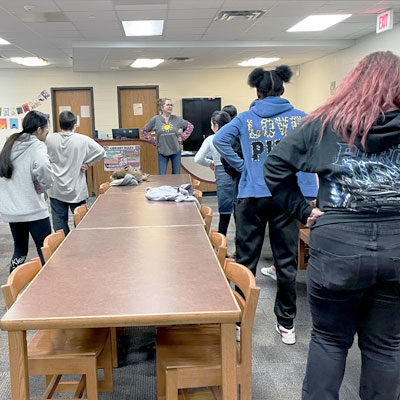



Collaborative Student Sessions
Session 1
In session 1 with students, Arts for Learning team members and the project artist engaged students in learning what they THINK, FEEL, and CARE about in their school community. Students overwhelmingly said they cared about their peers, environment, and learning.
Students also discussed the meaning of culture and how they would describe their own school’s culture. Responses included discussions about tradition, history, language, dress, food, religion, entertainment, and sharing. Students were very enthusiastic about their school’s physical environment, describing it as warm and fun, and they spoke lovingly about “the mouse in the wall,” a small, hidden image of a mouse in the media center.
“My school culture makes me feel welcome and smart”
– A student at IPS Frederick Douglass School 19
Session 2
Session 2 was led primarily by the project artist. The artist engaged in conversation with students based upon what was learned about what the students THINK, FEEL, and CARE about in Session 1, then inquired about student experiences in their environments outside of school, including their own neighborhoods and nearby parks. The majority of students shared stories about their own homes, neighborhoods, and outings with family, friends, and school field trips.
The teaching artist led students in a rhythm exercise based upon the artist’s previous work and its exploration of the relationship between grass and concrete. Students selected a specific sound to represent grass (egg shaker) and a sound to represent concrete (golf balls bouncing on hard surface). They then worked together to “translate” various images of concrete and grass into a rhythmic beat.
“You have to find your way.”
– A student at IPS Frederick Douglass School 19
The Role of the Artist
Following the collaborative sessions with students, the artist creates proposals for both a temporary installation (third space) and for a permanent artwork to be gifted to the school as a legacy to the project (Art for Learning’s Fresh stART program).
The artist’s conceptual drive for these works is derived from the intersection of the artist’s own fine art practice and history, and the students’ thoughts, feelings, and ideas.
“Following IPS 19’s philosophy that builds character and leadership through outdoor experiences, I will create a visually engaging installation inspired by the landscape of Indiana.
-Artist Dawn Holder
“The artwork will combine photographs, found objects, found text and images, and ceramic sculptures. This work celebrates curiosity, collecting, and the desire to understand the environment around us through careful observation.”
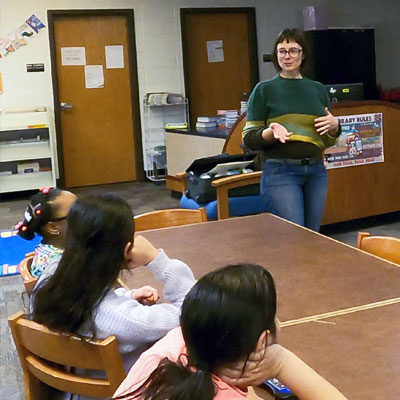

The Art Exhibition
The art installation remains visible for a week or two while the permanent legacy piece remains with the school.
During the school day, students encounter and interact with the art.
Arts Integration Workshop for the School’s Teachers
Teaching with original works of art can be a rewarding way of engaging in conversation about any topic; however, the challenge of such discussions can feel intimidating, and planning can seem overwhelming in an already busy schedule. In this workshop, select teachers collaborate with a curriculum specialist from Arts for Learning to integrate the third space works of art into lessons they already have planned.
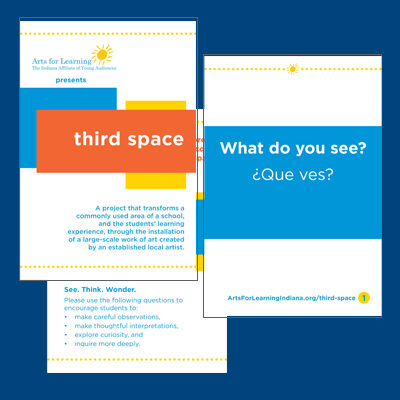

Art Exhibition Open House
IPS James Russell Lowell School 51: A Montessori School hosted an open house for students, their families, and community partners.
16 Questions to Ask Yourself When Viewing the art installation
We encourage the viewer to use these questions to encourage students to make careful observations, thoughtful interpretations, explore curiosity, and inquire more deeply.
What do you see? ¿Que ves?
What is going on in this artwork? ¿Qué está pasando en esta obra de arte?
What do you think? ¿Qué piensas?
What do you see that makes you say that? ¿Qué ves que te hace decir eso?
What do you wonder? ¿Qué te preguntas?
What is mysterious about this artwork? ¿Qué tiene de misterioso esta obra de arte?
What materials did the artist use to make this artwork? ¿Qué materiales utilizó el artista para hacer esta obra de arte?
What kind of work would you make with these materials? ¿Qué tipo de trabajo harías con estos materiales?
What story can you tell about this artwork? ¿Qué historia puedes contar sobre esta obra de arte?
If this artwork were music, what would it sound like? Si esta obra de arte fuera música, ¿cómo sonaría?
What title did the artist give this artwork? What title would you give it? ¿Qué título le dio el artista a esta obra de arte? ¿Qué título le darías?
Put your body into a pose like some element of this artwork. How does it feel to be in that position? Pon tu cuerpo en una pose como un elemento de esta obra de arte. ¿Cómo se siente estar en esa posición?
What do you want to remember about this artwork? ¿Qué quieres recordar sobre esta obra de arte?
If this artwork could talk, what do you think it would say? Si esta obra de arte pudiera hablar, ¿qué crees que diría?
If you could ask this artwork a question, which question would you choose? How do you think this artwork would answer? Si pudieras hacerle una pregunta a esta obra de arte, ¿qué pregunta elegirías? ¿Cómo crees que respondería esta obra de arte?
How does this artwork make you feel? ¿Cómo te hace sentir esta obra de arte?
IPS Frederick Douglass School 19
IPS Frederick Douglass School 19 is a K-8 community where students are challenged to learn both inside and outside of the classroom. Students are provided with a positive and caring environment where they have a voice. Along with rigorous instruction, students have the opportunity to participate in a number of extra-curricular offerings such as soccer, basketball, volleyball, band, art club and choir. Our students build character and life skills through outdoor exploration, overnight camping trips, canoeing, archery and gardening.
LEARN MORE


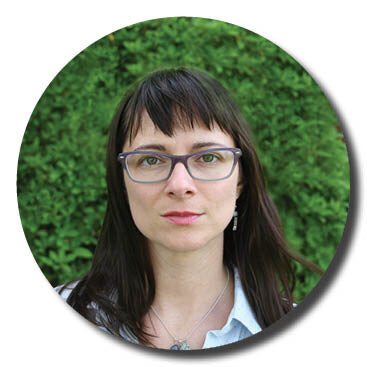

About the Artist
Dawn Holder uses ceramics, sculpture, and installation to investigate the myriad human forces that shape our shared landscape. Using porcelain as a primary medium, her work combines diverse influences, such as Minimalism, Eco-Feminism, and the Necropastoral, to explore topics such as the American lawn, the history of monuments, and ecological imbalance.
Holder lives in Indianapolis, IN and is an Associate Professor of Studio Art at Indiana University Indianapolis’s Herron School of Art + Design. She teaches in the Ceramics area and currently serves as Graduate Director of the MFA in Visual Arts.
She is the recipient of numerous awards and grants, including the Arkansas Arts Council 2015 Individual Artist Fellowship Grant, the Grand Prize at the 59th Delta Exhibition at the Arkansas Museum of Fine Arts in 2017, the Grand Prize at the 4×4 2018 Midwest Invitational Exhibition at the Springfield Art Museum in Missouri, and the Lighton International Artist Exchange Program Award in 2019.
Holder has shown her work in galleries and museums internationally, including the National Museum for Women in the Arts (Washington, DC); Disjecta Contemporary Art Center (Oregon); the Zuckerman Museum of Art (Georgia); the Zanesville Museum of Art (Ohio); and the Apple House Gallery at Guldagergaard (Denmark). Recent commissions include a site-responsive porcelain lawn installation created for the 2023 exhibition Together at the Arkansas Museum of Fine Arts (AR). Her work is included in the collections of the Historic Arkansas Museum, c.r.e.t.a. Rome, and Brightwater: A Center for the Study of Food.
Holder’s work and her creative practice have been profiled in numerous publications, such as Arkansas Life and E-Squared Magazine, as well as in the book Women Make Arkansas: Conversations with 50 Creatives.
She earned an MFA in Ceramics from the Rhode Island School of Design and a BFA in Ceramics from the University of Georgia. For more information, visit www.DawnHolder.com.
